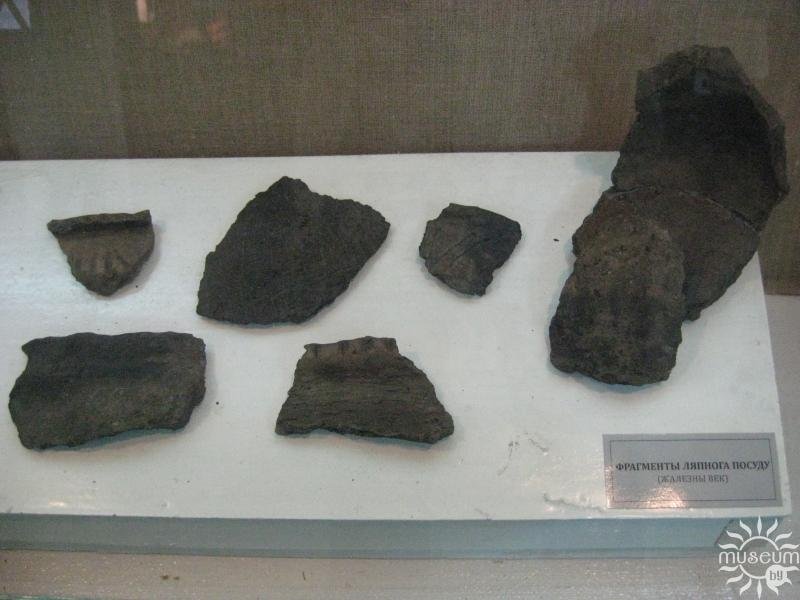The exposition of the Museum of Local Lore presents fragments of the most common form of pottery - molded pots made without the use of a potter's wheel. Decorated with ornaments, small and modest finds date back to the second half of the 1st millennium AD. The widespread use of pottery dates back to the end of the Stone Age (Neolithic). The potter masters in the era of iron used the experience of their predecessors, however, they already accumulated their secrets in the manufacture of ceramics. Potters were well aware of the quality of local clay, and additives were added to the dough in certain proportions, which reduced the cracking and deformation of the products during the roasting process. Crushed boulder stone (gruss) or broken ceramics (chamotte), and occasionally swamp ore served as impurities. The dishes were sculpted by the belt method: the tapes of clay were laid out in a circle, the joints were smoothed. People burned ceramics on an open fire. Until the 10th century the pots were of a rather simple form: with thick walls, carelessly burned often with a patternless ornament. This is what the pot of the 8-9th centuries looks like. It was found in 1962 during excavations in the embankment of the Polotsk settlement, by the famous archaeologist Georgy Vasilyevich Shtykhov. Traces of soot may indicate the use of dishes for cooking. From the middle of the 10th century plasterware began to be corrected on a potter's wheel. Ceramics, found in Polotsk, was smooth-walled, had a flat bottom, differed in slightly profiled form. The ornament on the surface of the pots most often had the appearance of lines drawn or cut, and there were also hatched utensils.

